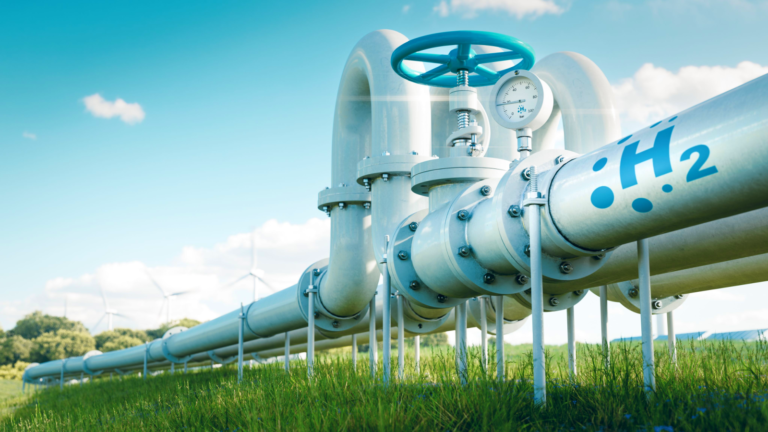Editor’s note: “Buy Superior Hydrogen Stocks for the Trillion-Dollar Breakout” was previously published in April 2023. It has since been updated to include the most relevant information available.
Though high rates and economic uncertainty have poured cold water on the once-red-hot EV industry, electric vehicles remain a dominant force in the global transition to a low-carbon future. They offer a clean and efficient way to power transportation with zero tailpipe emissions. But this was not always the case. In fact, even back in 2003, hydrogen was seen as the most promising alternative to fossil fuels.
In his State of the Union speech that year, then-President George W. Bush announced that he envisioned a future where cars would run on hydrogen and emit only water. He was partly right. Today, there are some vehicles that use hydrogen fuel cells to generate electricity and produce no harmful pollutants. But they are far outnumbered by electric vehicles that use batteries to store energy.
So, what happened to the hydrogen dream?
According to Matthew Blieske, Shell’s (SHEL) global hydrogen product manager, “there was always something missing.” Hydrogen faced many challenges, such as high costs, lack of infrastructure, safety concerns, and technological lack. While some progress has been made in recent years, hydrogen still lags behind electric vehicles in terms of market share, consumer acceptance, and policy support.
But we think things are about to change.
It seems hydrogen is poised for a major comeback and will likely emerge as a key player in global decarbonization.
That’s because technological innovations, policy support, and market demand are creating quite favorable conditions, perfect for hydrogen to flourish. New methods of producing hydrogen from renewable sources are becoming more efficient and affordable. Governments are setting ambitious targets and providing incentives for hydrogen deployment. And industries are looking for low-carbon solutions to meet their energy needs.
Indeed, according to Deloitte, the “global hydrogen trade is projected to generate more than US$280 billion in annual export revenues by 2050.”
Hydrogen is no longer a distant dream. It is a reality that is gaining momentum.
And the Hydrogen Economy is ready to take off.
The Drivers Have Arrived
As countries around the world strive to achieve net-zero emissions, the global political stage is set for mass decarbonization.
And now thanks to economies of scale, hydrogen fuel cells have become more affordable, dropping 60% in cost over the past decade. Further, Deloitte predicts that they will soon be cheaper than electric batteries and combustion engines.
Moreover, technological innovations and lower renewable energy costs have enabled the production of “Green Hydrogen” from clean energy sources, such as solar and wind.
This means that all the factors are aligned for the Hydrogen Economy to take off in the 2020s.
Blieske, Shell’s hydrogen expert, says: “We don’t see any barriers anymore. [In the past] there was a lack of policy, or the technology was not mature enough, or people were not serious about decarbonization.”
The Hydrogen Economy will unleash its full potential in the next decades, “top[ping] the value of the liquid natural gas trade by 2030 and grow[ing] further to US$1.4 trillion per year by 2050,” according to Deloitte’s research.

And we expect that the biggest opportunities will be in high-demand and long-distance energy and transportation sectors.
That’s where hydrogen has an edge over electric batteries. And that’s where hydrogen stocks will soar.
The Final Word on Hydrogen Stocks
See; when it comes to cost, efficiency, safety, and public roads infrastructure, battery electricity wins out. To that extent, battery electricity will likely be the dominant clean energy source for passenger cars and last-mile delivery vans.
But thanks to its unmatched energy density, hydrogen outplays battery electricity when it comes to range, recharging times, and emissions. So, in heavy-usage and long-range situations, hydrogen is best-in-class. Therefore, those fuel cells will likely be the dominant clean energy source for industry, stationary and cross-country hauling.
Think forklifts in warehouses, trucks that travel across the country, and ships that sail across oceans. And what about data centers that have to be “always on”?
Indeed, hydrogen fuel cells are on the cusp of disrupting those industries over the next decade.
And this is all happening amid the AI Boom, which could prove to be exceptionally beneficial for the hydrogen sector.
That’s because AI technology has the potential to optimize green hydrogen’s production, storage, and distribution, as well as improve H2 fuel cells’ performance and longevity. And we think that synergism could greatly benefit our clean energy plays.
See which AI stocks we’re currently looking at.
On the date of publication, Luke Lango did not have (either directly or indirectly) any positions in the securities mentioned in this article.

